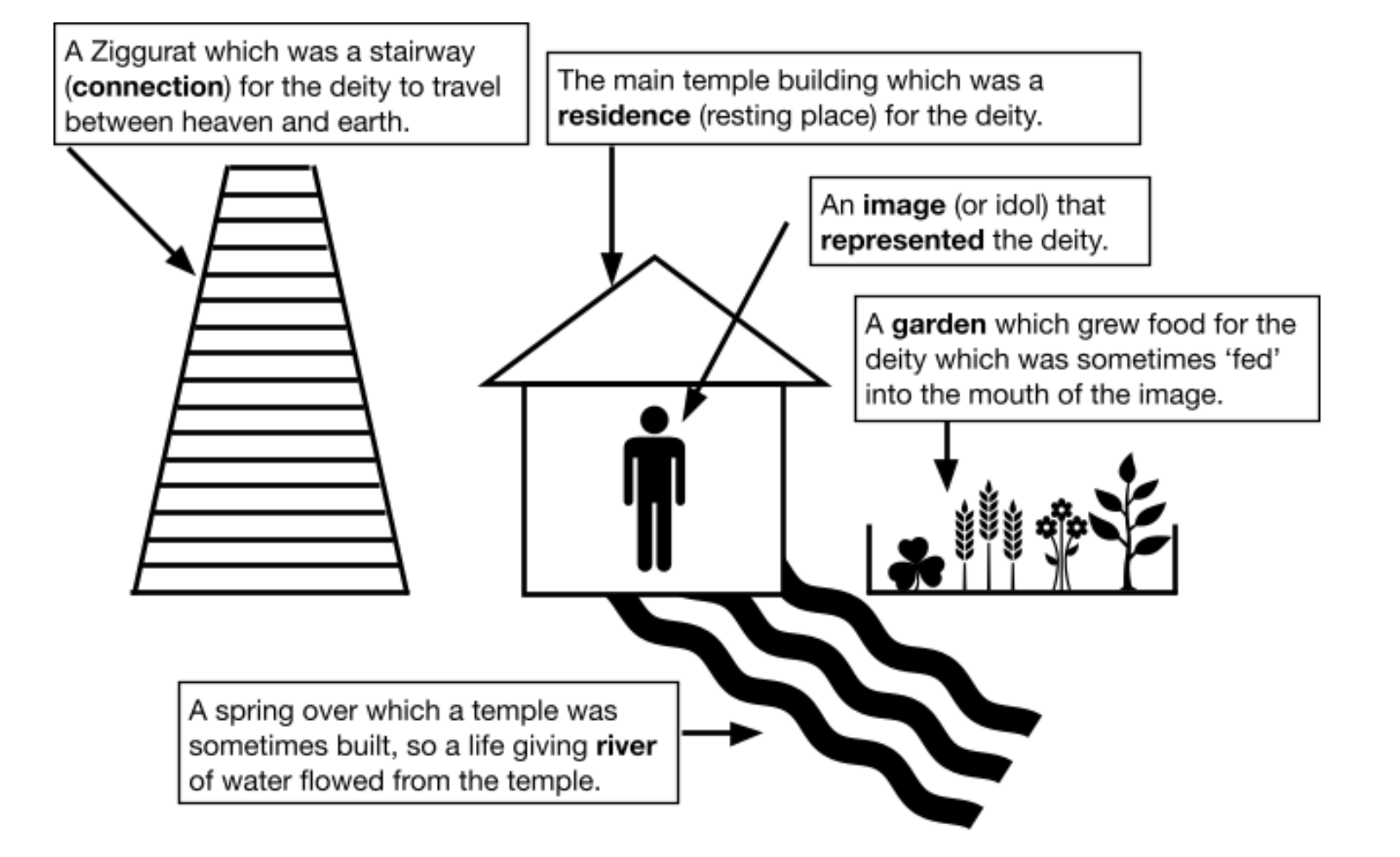Temples, Genesis and Family Trees
In this series of blog posts, we will explore the theme of Temple throughout the Bible, and look at four ways it can help us in our everyday discipleship.
In the times when the Bible was written, Temples played a central role in nations and cultures. However, Temples were not just ancient versions of church buildings. They were understood to be the centre from which a deity brought power, control and order to the human world. And this is why the destruction of a Temple was considered to be a cataclysmic event.
Features of Temples in the times the bible was written
In the Ancient Near East Temple complexes could have some or all of the following five features:

In addition, there are accounts from the Ancient Near East of the commencement of Temples being celebrated over seven days, of Temples being constructed over seven days, and of annual Temple celebrations taking place over seven days.
Creation and Temple in Genesis 1 & 2
Whenever someone uses the term ‘family tree’ to describe the network of relationships within their family, they are using the features of one well-known item (in this case a tree) to explain key features of a second item (the family). A similar thing happens in Genesis 1 & 2. The features of a Temple are used to explain key features of creation.
Seven Days
In Genesis 1, the creation account takes place over 7 days.
Image
When a Temple was constructed, the last thing placed into the Temple was an image of the deity. This image represented the deity. Many times these images/idols came to be seen as the deity and were worshipped as such.
In Genesis 1:26-27, humans are made in God’s image and placed into the newly constructed creation. While they represent God, humans (apart from Jesus Christ) aren’t divine and shouldn’t be worshipped (eg Acts 14:8-18).
Residence
When creation is complete God rests (Gen 2:2). This has the sense of God taking up residence in the world he has just finished creating.
The sense of a Temple being a resting/residing place is seen at the dedication of Solomon’s Temple: “Now arise Lord God and come to your resting place” (2 Chron 6:41).
Temple Lights
The wilderness Tabernacle (mobile Temple) had lamps to provide light. The word used for these lamps in Exodus, Leviticus, and Numbers is the same word that is used in Genesis 1:14-18 to describe the Greater and Lesser Lights. Amongst other things, the purpose of these lights is to mark ‘sacred times’.
Garden
In Gen 2:8-9 God plants a garden for humans (images of God) to take care of. This garden also provides food for them to eat.
River
A river flows from Eden watering the garden.
These six connections demonstrate an intentional comparison between the features of Temples and the features of Creation. This leads to the following points:
-
Creation is a Temple where God is present. This means there is no secular-sacred divide, everything is sacred. Creation is a Cathedral.
-
God created humans in his image and placed them in the Temple of creation to reflect God’s presence into the world. This means all humans have incredible value and important roles to fulfill.
-
The Garden at the centre of this Creation temple is a sanctuary where humans are intended to have personal access to God and God’s sustaining life as they carried out their roles as image bearers.
Discipleship Application: Connect to God in Creation
When Jesus called the first disciples to follow him, he called them to learn from him and to become like him. The foundation that made that possible was being with him. This was so important that at the Great Commission, Jesus declared he would continue to be with them to the end of the age. It is the same for us, being with God is the foundation for our discipleship.
Down through the ages, Christians like Brother Lawrence and Frank Laubach have testified that developing a habitual conscious awareness of God’s presence with them has transformed them. This ‘practicing the presence of God’ can transform us as well.
This is where the Cathedral of Creation is so important. If you have ever had the opportunity to visit Cathedrals, you may have found the size, scale, and quietness of the Cathedral along with the light coming in through stain glass windows helps create an awareness of God’s presence. Since all of creation is a cathedral, we need to practice letting Creation have the same effect on us.
Each time you go outside, deliberately see the heavens declaring the glory of God as in Psalm 19. Remember Isaiah 6:3 which says the whole earth is full of God’s glory. Look at a bird and remember that God’s eyes are on the sparrow (Luke 12:6). You might even remind yourself of the with God life described in Psalms 23 and 139. Let yourself become aware of God’s presence around you.
While this can be harder to do in urban environments, cultivating a connection to God in the cathedral of creation will help you live more and more of your life in conscious awareness of God’s presence with you. It is a simple but powerful habit you can practice today.